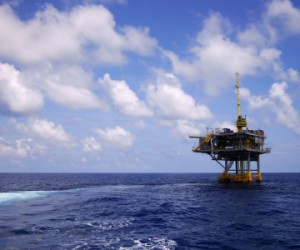Due to the size of its economy, South Africa is the largest polluter on the continent and ranks amongst the top 20 of the biggest greenhouse gas emitters in the world. But the government has their sights set on a solution to sustainability: the 2030 Vision.
In November 2011, the National Planning Commission (NPC) chaired by former Finance Minister, Trevor Manual presented the National Development Plan to the President.
The NPC’s main focus however was reducing the country’s carbon emissions to a sustainable level by adopting adaptation and mitigation policies.
South Africa has recognised the necessity to implement environmental sustainability programmes and is well on its way to transitioning to a low-carbon economy. The NPC outlined long-term sustainability strategies to alleviate the impact on climate change and has set the target to lower emissions to under 34% by 2020 and to under 42% by 2025.
Although this is a step in the right direction, it does present interesting challenges to the economy – mostly how it will continue ‘green growth’ or increasing the GDP in spite of constraints on natural resources and the cost to generate other sources of water and energy.
None the less, the vision advocates that a strong emphasis be placed on the expansion of renewable energy and waste recycling strategies, ensuring that buildings meet energy-efficient standards. An example is the prediction that solar water heating systems would have increased to five million by 2030.
The Department of Energy has since responded to the crisis and aims to secure electricity supply to 95% of the population by 2030 however, this does not necessarily mean that we will see a reduction in the cost of electricity.
More evidence of the national commitment to go green is a 5000MW solar park which is going to be built in Upington, Northern Cape – a project estimated to cost US$21.8 billion. The project is in line with the national strategy to decrease its carbon footprint while creating employment opportunities.
Eskom has also begun construction of 100MW solar park in the same region. Plans are on the cards for similar solar park installations on the historical Robben Island but on a much smaller scale than in the Northern Cape.
The water sector is faced with challenges similar to the energy sector. By 2015 South Africa would have exhausted its water supply. The national water resource strategy focuses on the goals which the Department of Water Affairs has to meet in order to achieve the 2030 targets. Infrastructure investment is a core component of the plans.
An agency will be set up by 2013 which will see to the development and management of large economic infrastructure systems. One of the biggest projects undertaken by the department is the Lesotho Highlands Project which is aimed at securing water resources and addressing the country’s development needs. Phase two of the project should be implemented by 2020.
Some of the major supply dams can no longer supply enough water for domestic use forcing the sector to explore other resources. Using ground water to boost the supply will ease the strain on the big dams. 2017 will see the completion of a ground water and water re-use project in the Western Cape.
The transition to a low carbon economy is broken into phases. Every phase is rolled out into a five year plan, each with very specific outcomes. By 2015 carbon tax would have been introduced not only on new passenger cars and light commercial vehicles but also in all sectors including electricity, petroleum, iron, steel and aluminum.
Some argue that the introduction of carbon tax will put further pressure on the energy, mining and manufacturing sectors that are already bearing the brunt of high costs of power. Eskom generates the majority of the country’s power making it difficult for companies to opt for cheaper less carbon heavy electricity.
Further to the introduction of carbon tax, investment programmes will be initiated into climate-related research and development, and skills development.
In 2020, the second phase of the vision 2030 strategy will be implemented. This phase will focus on policy development and implementation as well as South Africa’s international commitment to transition to a low carbon economy.
Predictions about the outcomes of Vision 2030 vary, particularly with regard to the scale of adoption in comparison to the targets outlined, the programme has been summed up by members of the private sector as ‘ambitious, but achievable.’
Undeterred, policy makers and key role players are confident that by 2030, South Africa’s investment towards a green economy will be realised.
The transition phase has highlighted a number of advantages and opportunities, including reduced carbon emissions, energy and resource efficiency and real sustainable economic growth.
With the goal to provide fresh water and energy from clean sources for its people and economy, the advantages will by far outweigh the challenges that transitioning presents, ensuring that South Africa will showcase true sustainability and make international counterparts green with envy.










